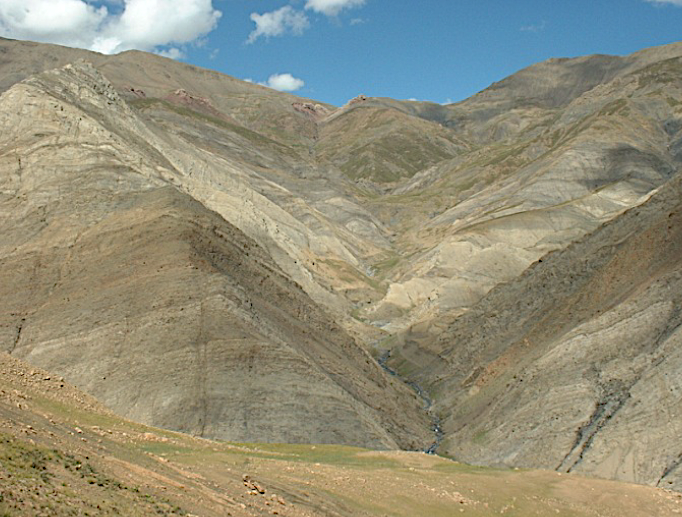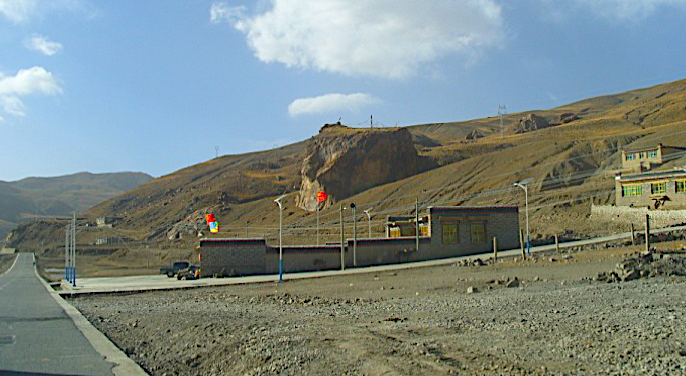Zongzhuo Fm
Type Locality and Naming
Himalayan North Belt. The Zongzhuo Formation was erected by the Coalfield Geological Team under the Xizang Bureau of Geology and Mineral Resources in 1957. The section for the designation is at Jiabulabeigou of Longma district of the Gyangze County, Xizang (Liu Guifang, 1983; Wu Weiran, 1984).
[Figure: Type section of Zongzhuo Formation in Jiabulabeigou of Gyangze County, southern Tibet]
Lithology and Thickness
Lower part of the Zongzhuo Formation is represented by dark gray and gray black laminated silty shale and siliceous shale, purple red siliceous shale and gray white thick-bedded limestone and sandstone lenses. Upper part is gray quartz sandstone, gray green siliceous shale, purple red calcareous shale and gray white thick-bedded limestone, with purple red and yellow green andesite lenses. Mélange got mixed into the strata.
[Figure: Mélange in Zongzhuo Formation at Relong village of Gyangze County, southern Tibet]
Relationships and Distribution
Lower contact
The base marked by dark gray laminated siliceous shale lies conformably on the underlying Jiabula Fm marked by gray medium-bedded siliceous limestone and shale.
Upper contact
The top of the formation is contacted with the overlying Paleogene Jiachala Fm.
Regional extent
The Upper Cretaceous Zongzhuo Formation is widely distributed in Jiabula and Yongmie of the Gyangze County and Tianba, Sage and Jilong of the Kangmar County of Xizang. It is overlying conformably on the Jiabula Fm, and was deposited at Tethys-Himalayan north sedimentary sub-belt and distributed along the south to the Yarlung Zangbo suture. It is distributed in a area of more than 1000 km long from west to east, and its width varies from several to tens kilometers S-N. It is connected with the north Yarlung Zangpo olistostromes chaotic mélanges by means of inverse fault and contacted with the underlying Jiabula Formation by unconformity.
GeoJSON
Fossils
Rotalipora of Cenomanian was reported from the lower part of the Zongzhuo Formation in Gyirong (Yin, 1988). In Jiabulabeigou, it yields ammonites Douvilleiceras cf. mammilatum, Beudanticeras sp.; foraminifera Globotruncana stuarti, G. stuatiformis, G. linneiana tricarnata, Rotalipora sp., Rugolobigerina sp., etc. (Wan, 2007). Large amount of radiolarian fossils have been found from this formation and recognized as three assemblages, they are Holocryptocanium barbui- Dictyomitra turris, Acanthocircus dicrancanthos- Thanarla pulchra and Thanarla veneta-Pseudodictyomitra pseudomacrocephala assemblages.
Age
Depositional setting
Additional Information

